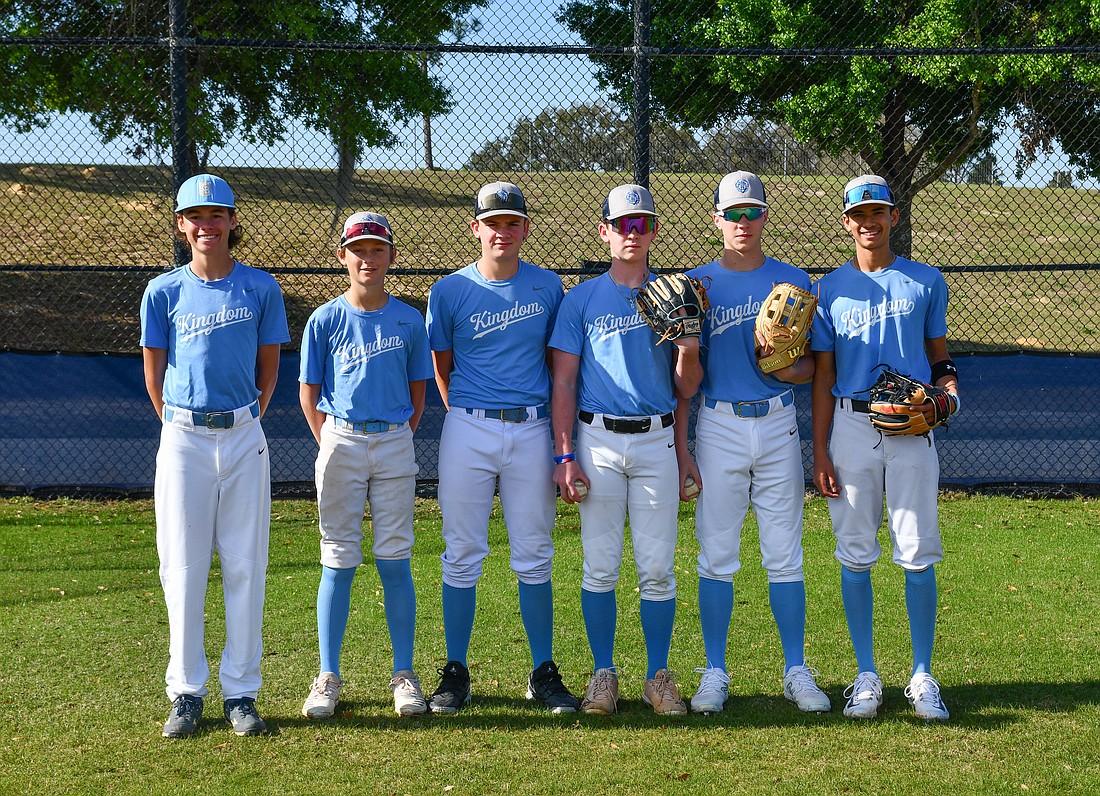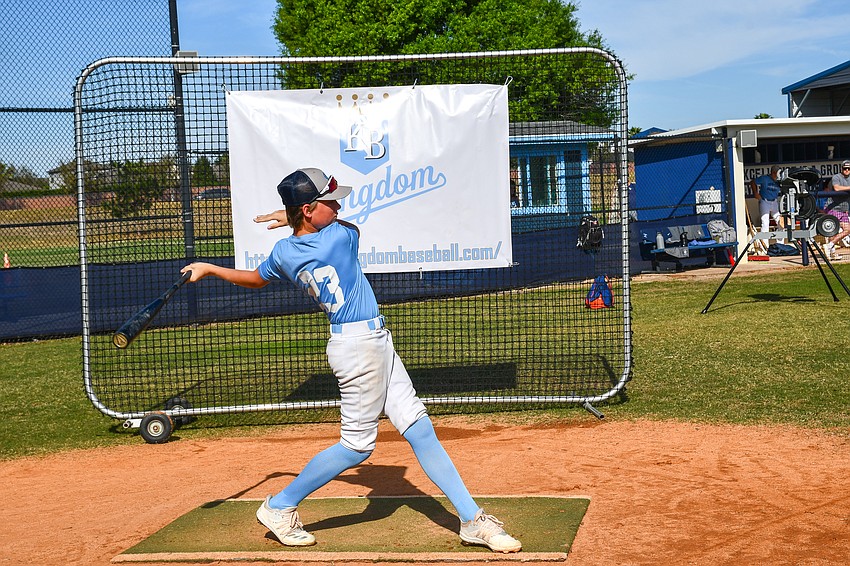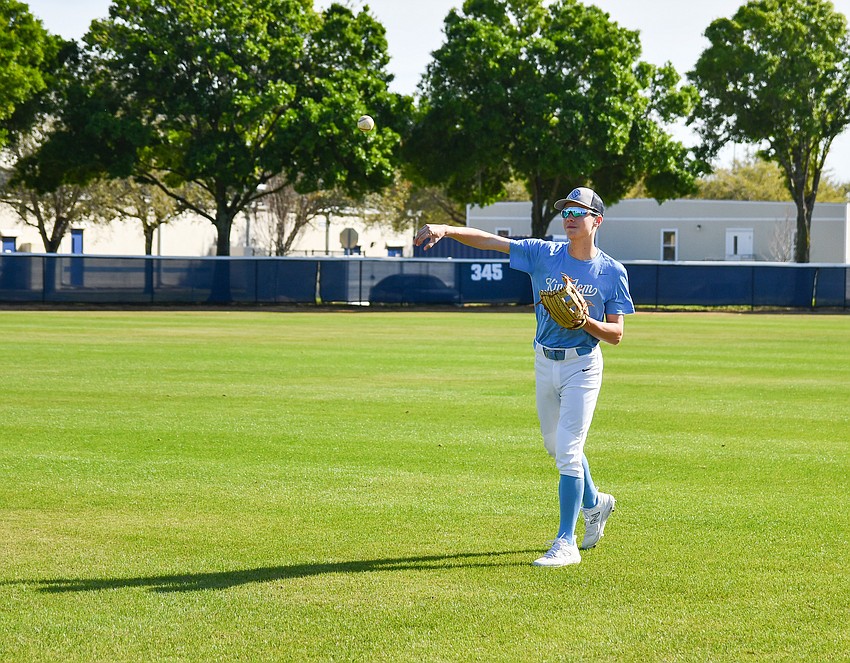- March 28, 2025
-
-
Loading

Loading

Travel baseball is nothing short of a phenomenon.
In the 1990s, travel baseball was a niche sport concentrated in baseball-rich areas such as California and Texas. Today, young baseball players see their involvement in the sport as a means to hone fundamentals and skills, as well as potentially capturing the attention of college recruiters.
“I have seen the travel industry through every lens that you can see it,” Foundation Academy head baseball coach Jay Welsh said. “I’ve been a travel-ball parent, I’ve been a high school coach, a travel coach and a college coach. (Travel baseball) has become very important because the timing of it happens during the summer, when college coaches can actually get out and see players.”
And, more recently, the sport has grown to include even younger players.
“There’s travel ball teams that are 8U,” The First Academy head baseball coach Scott Grove said. “But, at the younger age group, that’s kids that may be a little bit more serious about baseball than actual recreation leagues and little leagues, so it attracts a more of the younger players who want a little bit more competition. But, really as far as recruitment and all that, once you get into ninth grade, that’s when you start going to tournaments where colleges will be there. That’s really what travel baseball is for: Get as much attention from college coaches as you can.”
Despite high school baseball being a key element in terms of player development and character-building, travel baseball offers the opportunity to play a high number of games in a short period of time. Furthermore, because of social media, college recruiters can plan their itinerary accordingly.
“It is the easiest way for these colleges to get out and see a whole lot of at-bats and innings from pitchers in a short timeframe,” Windermere High head baseball coach Eric Lassiter said. “In travel baseball … you can play eight games in five days or so, and (recruiters are) able to watch several players take several at-bats over a couple of days. Then, the youth side of travel baseball has grown into a bigger animal because of social media.”
There are several differences between high school baseball and travel baseball. The biggest difference is that to play the latter, players have to pay a number of fees — such as a dry-out fee, a uniform fee and an organization fee — on top of all the travel expenses required in a single season.

Another difference is that high school games are played like actual baseball. However, travel ball games are set to a specific period of time — usually an hour and 45 minutes to two hours.
“The players are playing two games a day, and that’s kind of hard in baseball, when if you play your first game at 8 o’clock in the morning and then you have a gap and you play your next game at 1 p.m.,” Welsh said. “It takes up the entire day. And because of all of the games that they feel like they need to get in because of the price that they charge for being a part of the organization, it just changes the whole complexity of the way the game is played.”
Travel baseball tournaments may last several days, whereas high school games take place more throughout the week.
In addition, many players in travel ball won’t play an entire game.
“Some organizations have so many pitchers that have to get in that they don’t allow pitching changes to dictate the game,” Welsh said. “You can have three pitchers (who) are scheduled for one game, and the first pitcher can go out there and be flawless through three innings and only have 35 pitches, and they have to take him out, because the next kid has to get in. Whereas, when you play in high school, and you have a kid out there that’s dealing and has been effective for three innings — let up no hits, no runs and has 35 pitches — there is no way as a coach you are going to take him out.”
Because of equal play opportunity however, players are able to obtain higher college coach visibility.

“In high school baseball, the players are not necessarily my customer,” Lassiter said. “It is my job to develop (them), to get them better and put together the best team out there to win games. In travel baseball, the win is a byproduct of the quality of players you have, but your goal is to make sure that each player has an opportunity to be recruited at a school they can play at.”
Travel baseball may offer higher confidence to players after they have reached a higher level of experience and also can prepare younger players mentally for when they are set to start being noticed by scouts. However, it can also has factors that can potentially wear players down.
“The No. 1 ‘con’ is the burnout factor (and) the fact that kids at a young age are playing spring travel, then they play their high school season and then play summer travel and then they play in the fall, they never get any rest,” Welsh said. “So, they are not getting time off for their arms to get better. It used to be that you would take off from Thanksgiving to the beginning of baseball season in February and let that arm rest, and kids aren’t doing that anymore. They are just playing more and more baseball. From a physical standpoint, it’s wearing them down, and from a mental standpoint, they get burned out.”